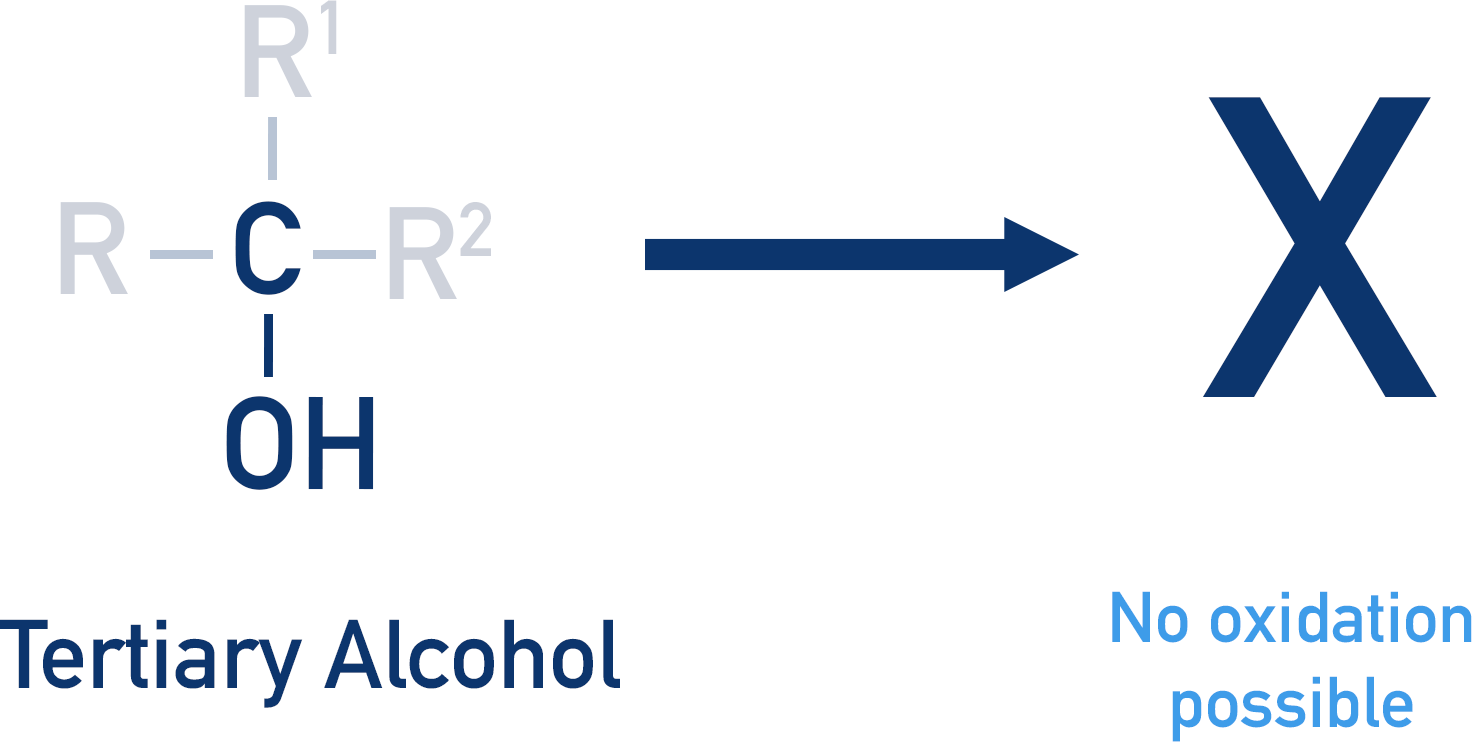Video Tutorial Electron Orbitals
Quick Notes Oxidation of Alcohols
- In organic chemistry, oxidation is a carbon atom gaining a bond to an oxygen atom and/or losing a bond to a hydrogen atom.
- To oxidise an alcohol, an oxidising agent (usually acidified potassium dichromate) is used and the alcohol is heated.
- Primary alcohols can be oxidised to an aldehyde, then to a carboxylic acid.
- To isolate the aldehyde, the products must be distilled from the reaction mixture.
- If a carboxylic acid is desired, the mixture must be heated under reflux conditions.
- Secondary alcohols can only be oxidised to form ketones.
- Fehling’s solution and Tollens’ reagent are used to distinguish between aldehydes and ketones.
- Aldehydes react to form a brick red precipitate with Fehling’s solution and a silver solid (silver mirror) with Tollens’ reagent. Ketones do not react with either.
- Teritary alcohols cannot be oxidised.
Full Notes Oxidation of Alcohols
In organic chemistry, oxidation describes a carbon atom in a molecule gaining a bond to an oxygen atom and/or losing a bond to a hydrogen atom (and electrons).
Primary and secondary alcohols can both be oxidised and new products formed. These reactions are very important in organic chemistry.
An oxidising agent is needed, usually potassium dichromate (to provide Cr2O72- ions) and concentrated sulphuric acid (to provide H+ ions). Heat is needed to provide energy to start the reaction(s).
Note, this page is for AS-Level (first year) organic content, for more advanced (A2-Level and 2nd year) chemistry with alcohols, aldehydes and ketones, see Carbonyls.
Oxidation of a Primary Alcohol
A primary alcohol can be oxidised to an aldehyde, which can then (when the reaction is carried out in reflux conditions) be oxidised into a carboxylic acid.

Oxidation of a Secondary Alcohol
A secondary alcohol can be oxidised to a ketone. There is no further oxidation possible.

Oxidation of a Tertiary Alcohol
A tertiary alcohol cannot be oxidised, as there is no hydrogen atom to be lost from the carbon atom that the alcohol group is attached to.

Distinguishing Between a Primary and Secondary Alcohol
One easy way of distinguishing between a primary and a secondary alcohol is to test for the initial products of oxidation for each alcohol: aldehydes and ketones.
Tollens’ reagent and Fehling’s solution both give positive test results for an aldehyde, but not for a ketone. So, if you oxidise separate samples of the primary and secondary alcohols in the same conditions (to ensure no carboxylic acid is produced from further oxidisation of the aldehyde), the sample that gives a positive result for an aldehyde must have contained the primary alcohol to start with.
Tollens’ Reagent:

Heat aldehyde with Tollens’ reagent, and a silver mirror precipitate is formed.
Fehling’s Solution:

Heat aldehyde with Fehling’s solution, and a brick red precipitate is formed.
We’ve launched our new site! 🎉
Course-specific notes with built-in search!
AP • A-Level (AQA • CIE • Edexcel • OCR) • IB • NCERT 11 + 12
over 750+ new pages and 3,500 images.
Visit the new homepage
